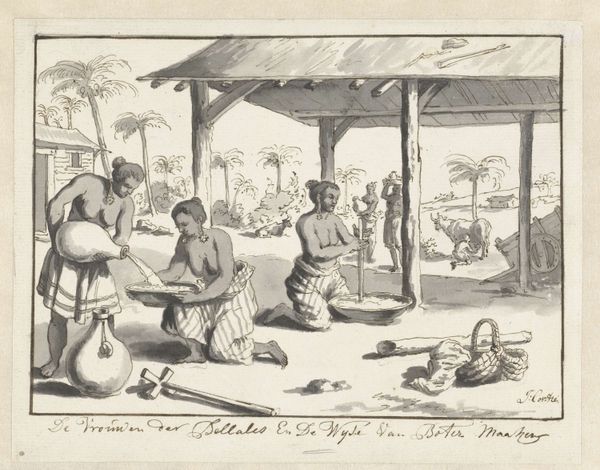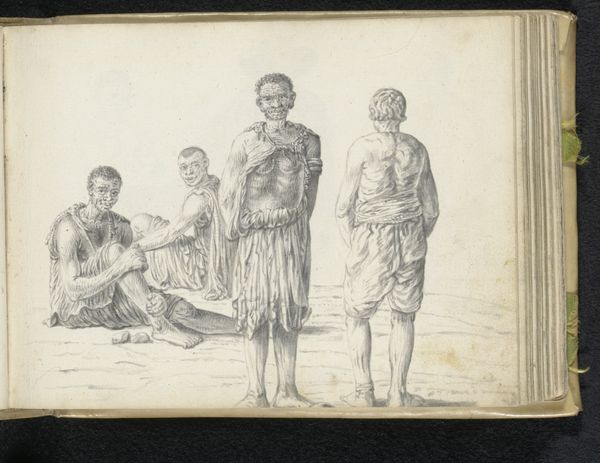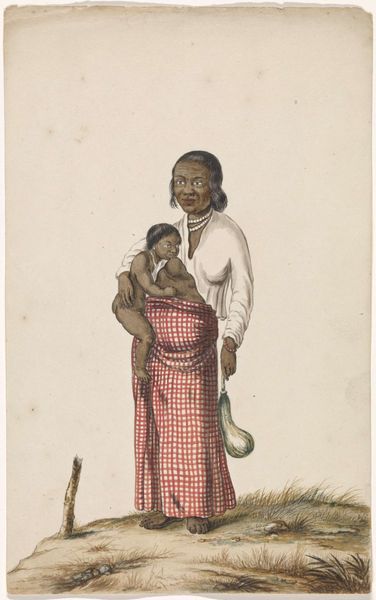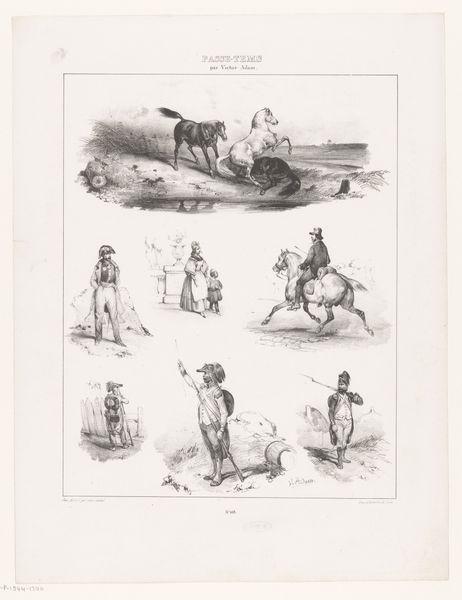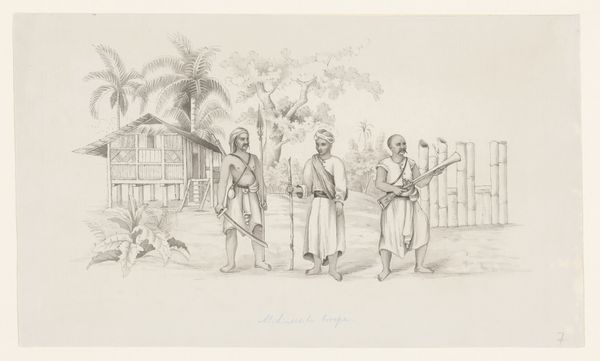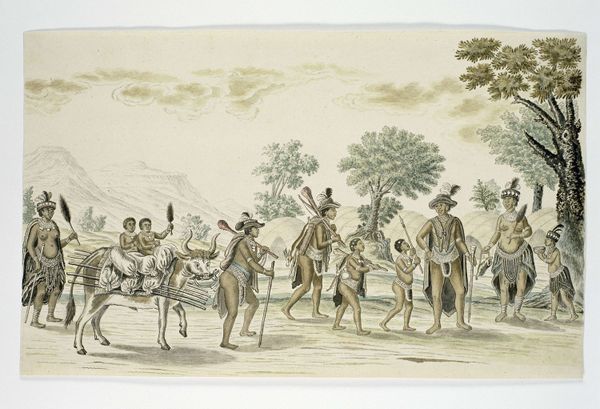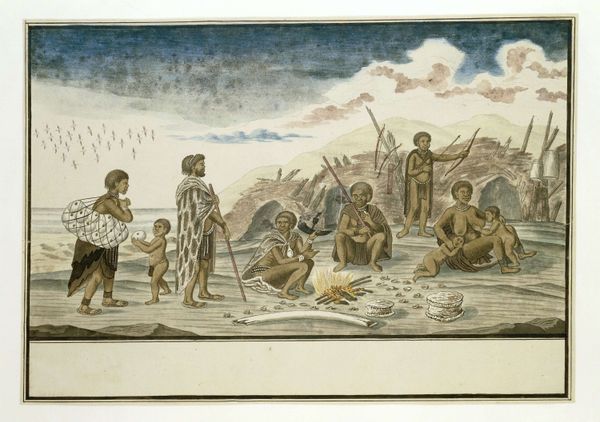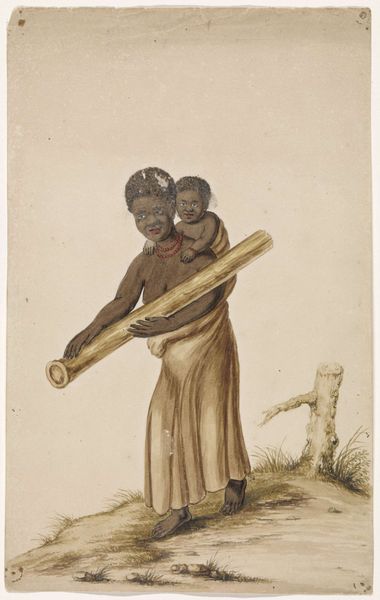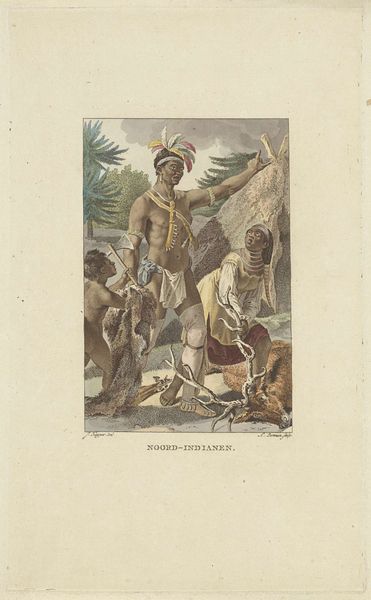
drawing, coloured-pencil, dry-media, pencil
#
drawing
#
coloured-pencil
#
pencil sketch
#
dry-media
#
pencil drawing
#
coloured pencil
#
pencil
Dimensions: height 660 mm, width 480 mm, height 198 mm, width 346 mm, height 174 mm, width 346 mm
Copyright: Rijks Museum: Open Domain
Editor: This drawing, "San-huishouden met vuur en kookpotten" – A San Household with fire and cooking pots – is by Robert Jacob Gordon, possibly made between 1779 and 1781. It’s a coloured pencil drawing depicting everyday life. The composition is simple but intimate. What can you tell me about its historical context? Curator: Well, this image, ostensibly a genre painting, participates in a complex history of representation. Gordon, as a commander in the Dutch East India Company, documented what he saw as "native" life in Southern Africa. How do you think the socio-political power dynamics of colonialism might influence this image, even at the level of its seemingly objective portrayal? Editor: It feels a bit... clinical. Like he's observing them as specimens. Is that a fair reading? Curator: It's perceptive. The drawing itself becomes a tool of knowledge production within a colonial framework. Consider the choices Gordon makes – the focus on the domestic sphere, the positioning of figures. What do these details communicate, and what perspectives might be missing? How do you think viewers in Europe might have perceived this work versus those within Southern Africa, both then and now? Editor: I suppose it presented a picture of an "other" to a European audience, reinforcing ideas about civilization and primitivism, while simultaneously ignoring the complexities of San society and their interactions with the outside world. Curator: Precisely. And today, its presentation in a museum raises questions about whose voices are centered and how we grapple with the legacy of colonial representation. It’s a historical artifact that reminds us that what gets represented, how, and by whom is laden with significance. Editor: So, seeing it today isn't just about appreciating the technique; it's about questioning the lens through which we’re seeing it. That really changes my initial perception. Curator: Indeed. Examining this artwork through a socio-historical lens urges us to think critically about art’s public role.
Comments
No comments
Be the first to comment and join the conversation on the ultimate creative platform.

